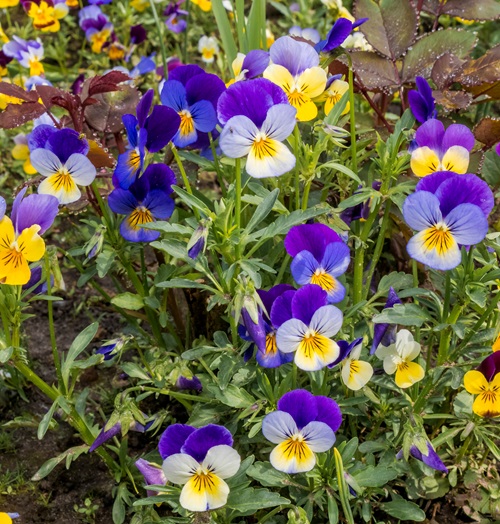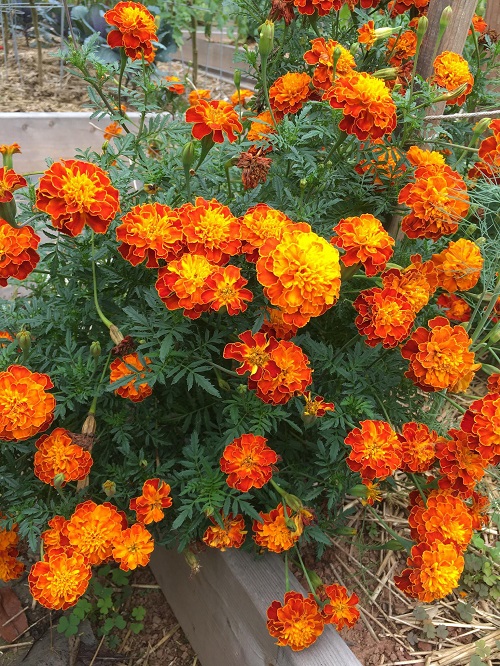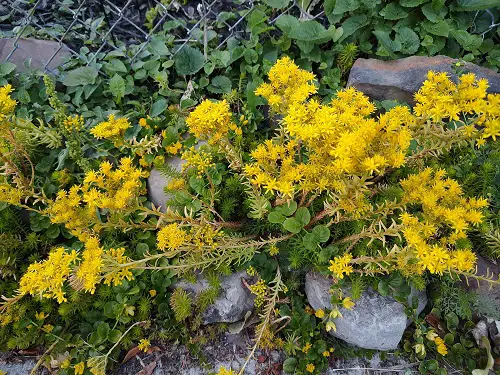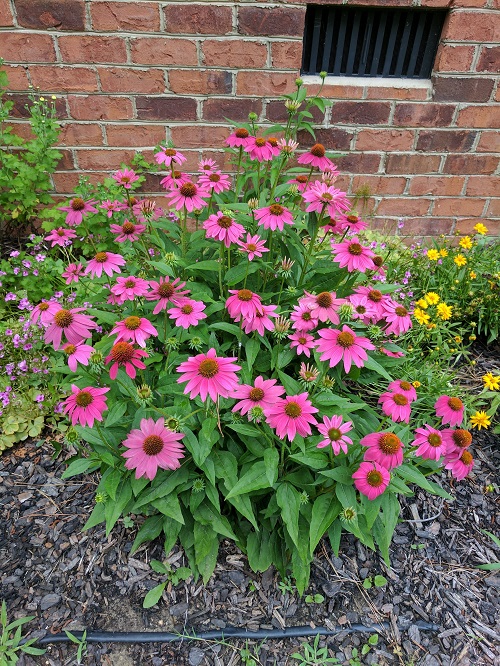Don’t want your garden to shed its charm in the fall? Grow these flowers in August for a spectacular display!
The colder months of the year take away the blooms of most plants, but not all! Instead of waiting till spring and summer for sunny blossoms, we suggest you grow these flowers in August for a spectacular display of blooms in fall!
Flowers to Plant in August
1. Mums

Botanical Name: Chrysanthemums
Mums are members of the Daisy family and, therefore, share the same floral beauty. While most other flowers perish, the showy, colorful, radial blooms with many florets begin to show off their true form in the fall.
You can plant Mums around August to feast your eyes upon the flowers, which typically last from late September to frost. They prefer organic soil with full sun, although they can tolerate some shade. Do not hold back on deadheading, as this will only encourage more blooms.
2. Pansies

Botanical Name: Viola tricolor
A herbaceous perennial that will glorify your garden in the spooky season is pansy! Growing up to 10 inches tall, they have colorful blooms, with certain cultivars having upto three different hues in a single blossom. Pansies love cool weather, and hence, they bloom profusely during winter in southern regions and late summer to fall in the northern parts of the USA.
Plant them in moderately fertile, moist, well-drained soils and full sun for showy, edible blooms.
3. Marigolds

Botanical Name: Tagetes spp.
While you can grow marigolds almost year-round in frost-free climates, August is an ideal for planting moderately cool, temperate and warm regions, down to USDA Zone 5. This way these flowers bloom throughout the fall until first expected frost.
Marigolds do well both in pots and ground, in almost all soil types as long as they get full sun for at least six hours a day.
4. Asters

Botanical Name: Symphyotrichum spp.
Asters have light green to reddish brown stems covered in fine hairs and saucer-shaped, multi-petaled flowers. Plant them in August, and their blue, purple, pink, and white daisy-like blooms will emerge in late summer to early fall.
These flowers flourish in full to partial sun and prefer rich clay or loamy soils. They invite tons of pollinators, thereby making your garden a biodiversity haven.
5. Stonecrop

Botanical Name: Sedum
Stonecrops are succulents that enjoy a good winter chill. While most succulents go dormant, these come alive in autumn with umbrella-like clusters of blooms in pastel shades of pink, red, and yellow.
This hardy succulent grows best in well-draining soil with low to moderate fertility and full to partial sun. It just can’t tolerate wet feet!
6. Russian Sage

Botanical Name: Salvia yangii
Native to Central Asia, this erect, woody shrub blooms all through spring and fall. Panicles of tiny blue and purple blooms rise above its silvery foliage from mid-summer to late October and again August is a nice time to plant it.
It thrives in well-drained, relatively dry soil and full sun.
7. Coneflower

Botanical Name: Echinacea purpurea
If you miss the company of hummingbirds, bees, and butterflies in your garden, coneflowers will do the trick! These perennials in the Asteraceae family produce pinkish-purple blooms late in fall if planted early in August.
Growing in clumps, these blooms need at least 6-8 hours of sunlight daily, with some afternoon shade. They tolerate drought, poor soil, heat, humidity, and salinity rather well and deter animals like deer from ruining your garden.
8. Sneezeweed

Botanical Name: Helenium autumnale
Sneezeweed blooms and fruits in fall, and hence, makes for a great addition to our list of flowers to grow in August. It produces bright yellow flowers that used to be pulverized for making snuff—the stuff that gets you sneezing! This has caused it an unfair reputation of being an allergen, while in reality, its pollen is heavy, sticky, and isn’t air-borne!
Pollinated by bees and butterflies, this plant loves moist soil conditions and is naturally found near swamps and ponds. However, this sun loving flower is toxic and invasive, so give it some thought before you plant it.
9. Japanese Anemone

Botanical Name: Anemone hupehensis
Japanese Anemones are members of the buttercup family and bloom from late summer to mid-fall. These elegant flowers come in shades of pink, white, and purple, with a single or semi-double petal arrangement and a yellow center. Japanese Anemones are known for their long blooming period and ability to attract butterflies.
Grow these plants in well-drained and fertile soils, but keep the soil a bit moist. The sun’s rays might burn them during noon, so partial sunlight is sufficient for healthy growth.
10. Autumn Crocus

Botanical Name: Colchicum autumnale
Last on the list is this perennial herb that stands out during autumn—hence the name! If you plant it around August, you’ll be rewarded with only blooms through late fall, as its foliage sheds around this time. These flowers are typically pink or purple and have a delicate goblet shape.
However, these flowers contain a potent toxin known as alkaloid colchicine, which can lead to fatalities if ingested.
It thrives in well-drained, loamy soil with a pH level of 4.5-7.5, full or partial sun, and cool weather.


